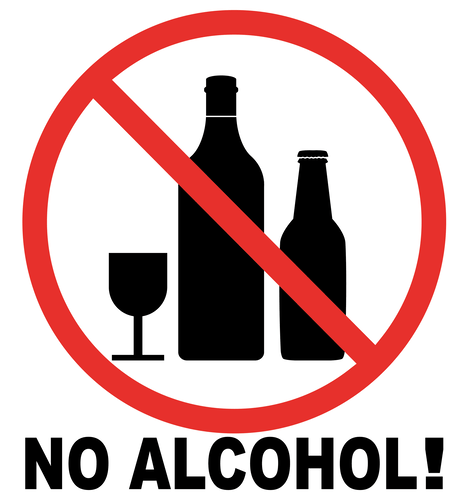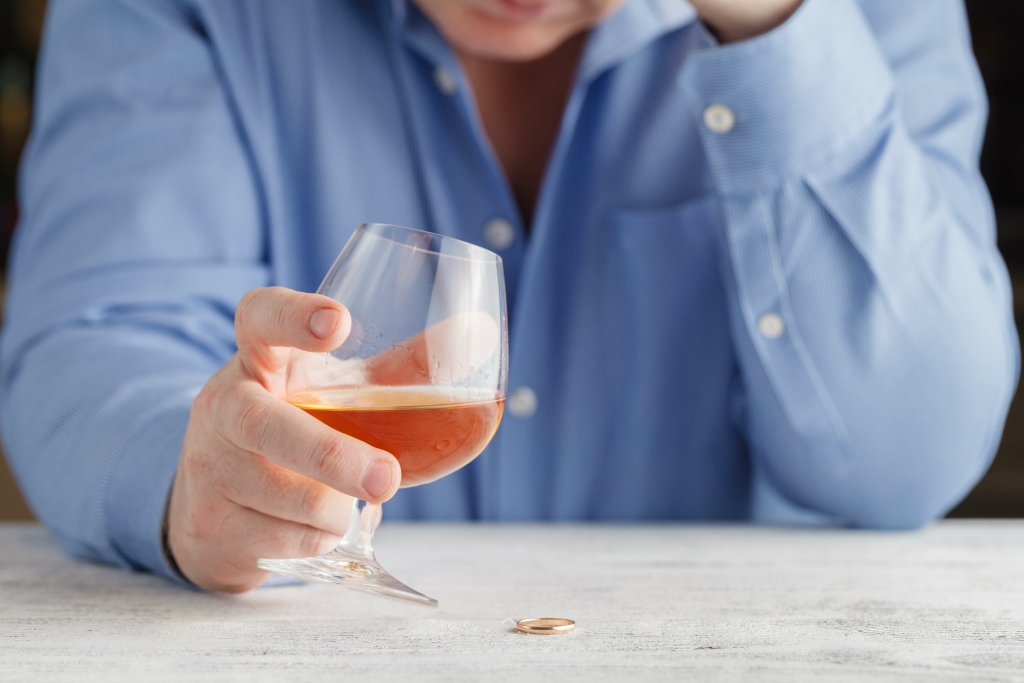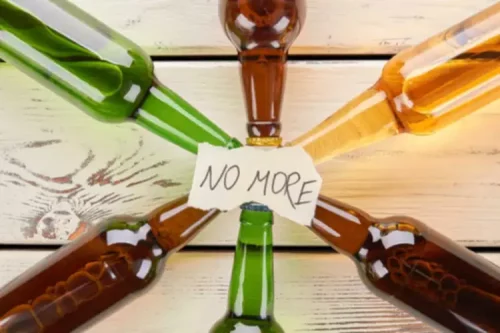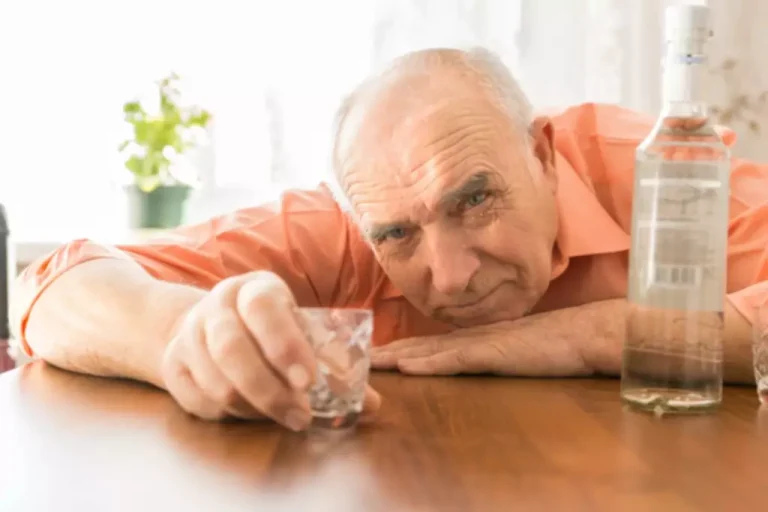Understanding Cocaine’s Effect on Your Teeth, Gums, and Oral Health
The best way to treat cocaine addiction is to seek treatment. At cocaine rehab, people can receive support and evidence-based treatment that matches their specific needs. According to the survey, powder cocaine is far more common than crack cocaine, which was used by 0.1% of the population. It was second only to cannabis, which was used by 7.2% of people. The effect, or ‘high’ with snorting may last 15 to 30 minutes, but does not occur as quickly as smoking or injecting it. People who use illicit drugs, especially when injected, are at increased risk for diseases like HIV, hepatitis C, skin infections and vein collapse.
What are nitazenes?
Smoking crack can damage your lungs and worsen asthma symptoms. If you inject it, you could develop tracks (puncture marks on your arms) and infections, such as HIV or hepatitis C. Research suggests that certain communities may be more prone to using drugs, including cocaine. For example, those who identify as LGBTQ are more than twice as likely to use illicit drugs as heterosexual people. LGBTQ adults are also more than twice as likely to have a substance use disorder. The risk of addiction is even higher with crack cocaine because its effects are more immediate and more intense.
Why Cocaine Is So Addictive
The research team found that cocaine is the second most addictive drug behind heroin. The full extent of the effects of cocaine use on the unborn or newborn child are difficult to predict. Multiple factors can play into this outcome, such as use of other illegal drugs, maternal sexually-transmitted diseases, extent of prenatal care, and socioeconomic factors, among others.
Psychological effects
Researchers are evaluating drug treatments that help people stop using cocaine. Alternatively, the powder form of cocaine is injected or snorted. When the powder form is dissolved in water and injected, the drug reaches the bloodstream immediately and has an increased intensity of effect. The powder form can be snorted up the nose or rubbed on the gums.
Resources and support
- Globally, it is the second most frequently used illicit drug.
- An ER doctor will test for those conditions and try to treat them first.
- In general, when the price of cigarettes increases, people smoke less.
- Rather than social background, one of the best predictors of cocaine use is what a person does in their spare time.
- Cocaine addiction is a complex disease, with physical, mental, social, environmental, and familial factors.
- Although only a relatively small proportion of the population use cocaine, use has increased significantly in the past 20 years in Australia.
You may develop thinning or deterioration of the septum nasi (the septal cartilage in your nose) if you snort the drug. Injecting the drug can increase your risk of a serious skin infection, such as a bacterial staphylococcus infection. Cellulitis (a severe type of skin infection) and necrotizing fasciitis (destruction of the infected tissue), and a systemic infection can develop as well. Sharing needles can increase the risk of HIV and hepatitis B. The 2021 (U.S.) National Survey on Drug Use and Health (NSDUH) concludes 4.8 million people age 12 and older used cocaine in 2020.
In fact, I would go even further to say they would both benefit from rediscovering each other. One leading light in classical Tantra (at least in the English-speaking world) is US scholar-practitioner Christopher Wallis. In his most recent book, Near Enemies of the Truth (2023), Wallis analyses many of the trendiest terms used by alternative spiritualities. He convincingly shows these terms can be misleading if separated from their roots in Indian philosophy.
Long-term or frequent use can break down tissue, causing sores. In severe cases, the septum (the cartilage between your nostrils) can develop https://sober-home.org/narcissism-and-alcoholism/ a hole. That also depends on how it’s consumed, along with other variables, like your dose and whether you’re taking other substances.
Some users report feelings of restlessness, irritability, and anxiety. The psychoactive and pleasurable effects are short-lived without continued administration. Continued use, or even a first-time use, can be dangerous and deadly. Yes, cocaine abuse can lead to an overdose and serious or deadly side effects after your first use or anytime thereafter. There is no specific medication that can reverse a cocaine overdose. Long-term, cocaine use can lead to an increased risk for becoming malnourished due to loss of appetite.
Governments can do a few simple things to prevent the harms we’ve seen in other countries from nitazenes. They could expand harm reduction services, such as drug checking and supervised injecting services, and ensure we have ample stocks of naloxone. They’re also very quick to act and can stay longer in the body than other opioids.
When you snort it, it takes slightly longer to feel the effects. The 2021 survey found no differences in rates of cocaine use among different ethnic and racial groups in the U.S. Adrienne Santos-Longhurst is a freelance writer and author who has written extensively on all things health and lifestyle for more than a decade.
Your chances of getting HIV, the virus that causes AIDS, are higher if you use cocaine. Some research has suggested that cocaine damages the way immune cells work in your body, which could make HIV worse. The drug is made from the leaves of the coca plant, which grows almost nowhere other than the northern and western regions of South America.
Using heroin and cocaine together (known as a “speedball”) is arguably the most dangerous of all drug combinations that include cocaine. After the first hit, people can quickly progress to repeated use and addiction. According to the Center for Substance Abuse Research, a person can become addicted to crack cocaine after the first time trying it. Unlike heroin and opioid drugs, there are no medications used to treat cocaine addiction. The treatment is focused on detoxification (also referred to as detox) and behavioral therapies. You might receive treatment with a pharmaceutical drug if you have a co-addiction that can be treated pharmacologically, such as an addiction to alcohol or opioids.
If you seek an inpatient program, you would be in a supervised setting where you are not able to obtain or use the drug. When you stop taking cocaine, you can experience severe withdrawal symptoms that need to be managed. According to the National Institute on Drug Abuse, around 68% of people seeking cocaine treatment regularly use crack cocaine. Reuptake is a process that normally modulates the action of the neurotransmitters by decreasing their concentration in the brain. When cocaine excessively increases the concentration of “feel good” neurotransmitters in the brain, the drug prolongs and amplifies the effects of these chemicals.
If you or someone you know has problems with cocaine use, seek help from a doctor or mental health professional. Many people who use cocaine also use alcohol, and this combination can be particularly dangerous. The two substances react to produce cocaethylene, which may increase the toxic effects of cocaine and alcohol on the heart.17 The combination of cocaine and heroin is also very dangerous.
Regular usage, even without overdosing, increases the risk of negative health consequences. People who are addicted may eventually prefer taking cocaine to any other activity. Their lifestyles may alter completely as the addiction takes hold. Long-term use can gradually change the brain’s reward system, increasing the risk of addiction. Cocaine has a very powerful stimulating effect on the nervous system.
People who used cocaine this way reported painful and receding gums. Researchers theorized it could be due to the drug’s vasoconstrictive properties. Evidence shows that people will stop using when the costs become too high (Dalrymple, 2006). Many of the states that have the lowest smoking rates are those that have been the most aggressive about indoor smoking laws and about state taxes that drive up the cost of cigarettes. In general, when the price of cigarettes increases, people smoke less. Increases in taxes on alcohol generally lead to reductions in alcohol consumption and reductions specifically in binge and other kinds of excessive drinking.
Therapeutic communities focus on the resocialization of the individual and can include on-site vocational rehabilitation and an array of other supportive services. Many behavioral treatments have been found effective for stimulant abuse, including in both residential and outpatient situations. Behavioral therapies are often the only available effective treatment for many drug https://sober-home.org/ use problems, including cocaine use. Long-term effects of cocaine use include addiction, irritability and mood disturbances, restlessness, paranoia, and auditory hallucinations. Once someone becomes addicted to cocaine, it can be very hard to stop. This is because cocaine abnormally increases the level of dopamine in the brain, eventually reprogramming the brain reward system.
Asking for help is a huge and important step toward recovering from cocaine use disorder. They may refer you to a substance abuse counselor or recommend community-based programs. Normal amounts of dopamine can make us feel happy, alert and focused.
Healthline does not endorse the use of any illegal substances, and we recognize abstaining from them is always the safest approach. However, we believe in providing accessible and accurate information to reduce the harm that can occur when using. “Specific studies are needed to determine the exact consequences of this contamination on the animals,” Hauser-Davis said. “It is believed that there may be an impact on the growth, maturation and, potentially, fertility of sharks, since the liver plays a role in the development of embryos.” Researchers at the Oswaldo Cruz Institute in Brazil found cocaine in 13 Brazilian Sharpnose sharks caught off the coast of Rio de Janeiro, according to the study published last week.
Adolescent Substance Use and the Brain: Behavioral, Cognitive and Neuroimaging Correlates PMC

“[Fentanyl’s] infiltration into schools is certainly something that cannot be ignored,” says Alberto Carvalho, the superintendent of the Los Angeles Unified School District. LAUSD is one of the largest districts to stock naloxone, a medicine that reverses opioid overdoses, throughout its schools. The results were gathered from a nationally representative sample, and the data were statistically weighted to provide national numbers. This year, 11% of the 12th grade students who took the survey identified as African American, 22% as Hispanic, 5% as Asian, 1% as American Indian or Alaska Native, 47% as white, 1% as Middle Eastern, and 14% as more than one of the preceding categories. For the 2022 survey, 48% of 12th grade students identified as male, 47% identified as female, 1% identified as other, and 4% selected the “prefer not to answer” option.

More Singapore teens under 16 caught abusing drugs in 2024: Faishal
The majority of them are fathers who act in this way due to boredom, stress from their jobs, emotional discomfort, problems with their families, or problems with their spouses. These behaviors need to be discouraged because they may affect the child’s academic performance, physical growth, etc. Because they primarily revolve around educating students about the dangers and long-term impacts of substance abuse, previous attempts at prevention have all been ineffective. To highlight the risks of drug use and scare viewers into abstaining, some programs stoked terror.
- The particular mental behavior that mediates the link between childhood trauma and adult suicidal ideation and attempts is yet unknown.
- Griffin, Sienna and Laird’s deaths are part of a grim crisis happening all across the country.
- However, marijuana can be harmful to teens because their brains are still developing.
- JK formulated the idea for the review and guided the research and writing process.
Alcohol and Nicotine

Individual risk factors include difficulties handling impulses, emotional instability, thrill-seeking behaviors, and underestimating the consequences of using. Risk of SUD also increases during times of transition, such as changing schools, moving, or parent divorce. Societal risk factors for teenagers include peer pressure and the portrayal of teenage drinking in the media, including social media and advertising which promotes drinking behaviors in teenagers. Marijuana is among the most often used illegal psychotropic substances in India and internationally. The prevalence of marijuana usage and hospitalizations related to marijuana are rising, especially among young people, according to current trends.

Fentanyl Laced Pills Can Trigger a Fatal Overdose

Data from surveys that were conducted in the classroom, school, or local community that demonstrate the prevalence of substance use in the immediate social setting may be used to support this information. If not, this can be taught using statistics from national surveys, which usually show prevalence rates that are far lower than what kids describe. Teenagers are often exposed to alcohol, drugs, and smoking either because of pressure from their friends or because of being lonely. The pupils are instructed in the best ways to steer clear of or manage these harmful situations.
A study looking at substance use and psychiatric comorbidity in subjects aged 13–15 found that regular alcohol and nicotine use had an additive risk for psychiatric disorders, with especially high risk for depressive disorder (Boys et al., 2003). A 2016 study found that alcohol and cigarette consumption increased physical aggression in adolescents aged 14–16 (Matuszka et al., 2016). This increase was significantly greater than that observed in non-concurrent users, showing greater effects in combination than those of the individual substances.
Why Do Teens Use Drugs?

“Adolescents who have suffered abuse are more likely to struggle with feelings of anxiety, depression and distress than other teens. But at the same time, they are less likely to have developed effective coping strategies for dealing with these emotions, teen drug abuse due to poor role modelling and lack of emotional responsiveness from parents,” Kaminer said. The rates of substance abuse differ significantly between violent and non-violent offenders, with distinct patterns observed in the types of substances used.
What Are the Four Stages of Drug Addiction?
The authors declare that the research was conducted in the absence of any commercial or financial relationships that could be construed as a potential conflict of interest. The 2023 Monitoring the Future data tables highlighting the survey results are available online from the University of Michigan. The content published in Cureus is the result of clinical experience and/or research by independent individuals or organizations. Cureus is not responsible for the scientific accuracy or reliability of data or conclusions published herein.
Mourning families are often leading the charge
- In addition, students with less engagement in school – a known risk factor for drug use – may have been less likely to participate in the survey, whether in-person or online.
- Several factors can contribute to emotional and psychosocial stress, compelling one to practice drug abuse.
- Importantly, as studies indicate compounding detrimental effects of adolescent and prenatal drug exposure on neurological and cognitive outcomes (Jacobsen et al., 2007b,c), not all studies outlined here control for prenatal drug exposure.
- The completed survey from 2022 is nationally representative and represents about 75% of the sample size of a typical year’s data collection.
- This year, 11% of the 12th grade students who took the survey identified as African American, 22% as Hispanic, 5% as Asian, 1% as American Indian or Alaska Native, 47% as white, 1% as Middle Eastern, and 14% as more than one of the preceding categories.
- This video for middle school students describes the effects of addiction and how getting high can take over your life.
Adolescent substance users suffer risks and consequences on the psychological, sociocultural, or behavioral levels that may manifest physiologically [11]. The majority of the 273,000 preventable fatalities linked to alcohol consumption are in India [12], which is the leading contributor. The United Nations Office on Drug and Crime conducted a national survey on the extent, patterns, and trends of drug abuse in India in 2003, which found that there were 2 million opiate users, 8.7 million cannabis users, and 62.5 million alcohol users in India, of whom 17% to 20% are dependent [13]. According to prevalence studies, 13.1% of drug users in India are under the age of 20 [14]. This review will outline the cognitive, psychopathological, and future drug use related associations with adolescent substance use, especially related to the emerging trends in this use that have not been addressed in previous reviews.
Mind Matters Series
The effect of drugs and alcohol on a teenager’s brain can increase the likelihood of developing a mental health disorder.3 Although it’s difficult to prove that substance abuse causes mental health problems, they are closely linked. The percentage of adolescents reporting substance use in 2022 largely held steady after significantly declining in 2021, according to the latest results from the Monitoring the Future survey of substance use behaviors and related attitudes among eighth, 10th, and 12th graders in the United States. Reported use for almost all substances decreased dramatically from 2020 to 2021 after the onset of the COVID-19 pandemic and related changes like school closures and social distancing.
California pays meth users up to $599 a year to get sober Los Angeles Times
The amount of time you’ll stay at a halfway house varies, but most stays are between three to twelve months. This gives you enough time to get back on your feet, secure a steady job, and feel strong in your sobriety. Based on your violation of the rules, for instance, you might have to make amends to other residents, write essays about your harmful actions, or pay fines.
Guidelines & Rules of Halfway Houses
Individuals who require more intensive addiction treatment can access outpatient medicalservices at a rehab facility while they finish their sentence at a halfway house. The intensity of care and types of services offered vary depending on the residents’stage of recovery. Halfway houses designed for people in early stages of recovery provide more resources and structurethanthree-quarter houses, which are sober living homes for people who have a longer history of sobriety. Residents are often expected to engage in daily tasks such as seeking employment, attending educational programs, preparing meals, or handling chores. Residents must attend 12-step meetings like alcoholics anonymous, Narcotics Anonymous, and similar or other group activities.
Latest California
Two new bills would allow state funding to support sober housing for homeless residents, a significant departure from California’s current ‘housing first’ law. Understand that the size of the program can impact the support and level of attention you receive. For instance, smaller programs have Top 5 Advantages of Staying in a Sober Living House a more intimate and personalized experience, while larger programs may have more resources and amenities. Paul needed a structured and supportive social life, he needed to be with others in recovery. Generally, the cost of living at a halfway house ranges from $100 to $2,000 per month.
- They can also help you determine what length of stay is the right one for you.
- Strict enforcement of these rules ensures a stable environment where you can focus on your recovery without external pressures or temptations.
- California was the first state to cover this approach as a benefit in its Medicaid program, according to the Department of Health Care Services.
Common House Rules of Sober Living Homes
A halfway house, also known as a “sober living house” in some states, is a transitional living facility for those in recovery from drugs or alcohol. To live in https://thetennesseedigest.com/top-5-advantages-of-staying-in-a-sober-living-house/ most recovery residences, you must be abstaining from drug and alcohol use. Some homes will require that you already be sober for a specific period of time.

The bills come as California’s homelessness population is skyrocketing, having increased from about 118,000 in 2016 to more than 181,000 last year. Some critics blame and want to overturn the state’s inclusive housing policy. At the same time, as public fears about crime soar, voters in some liberal cities are putting limits on who can receive public assistance. Transitional housing is temporary housing for the working homeless population and is set up to transition their residents to permanent housing.
Early signs of rising COVID in California as new FLiRT subvariants dominate
Two new bills would allow state funding to support sober housing — a significant departure from current law, which requires providers to accept people regardless of their drug and alcohol use. The housing programs help participants learn life skills, develop vocational skills and find employment. They can also providereferrals to general health services and mental health providers. The main goal of residential reentry centers, the term that the Federal Bureau of Prisons uses to describe halfway houses,is to reduce recidivism. Most of the centers are run by contractors, and the Federal Bureau of Prisons provides oversight. The term halfway house has beenstigmatized because of its association withprisoners and people who have a history of drug use.
- Many sober living homes in Los Angeles offer some or all of these services and require residents to follow an intensive schedule geared toward recovery.
- Most residents of these homes have recently completed an inpatient or outpatient treatment program.
- Apart from personal networks, broader crowdfunding efforts can also be beneficial.
- You need somewhere safe you can go after treatment, a place where you’ll be free of triggers and surrounded by social support.
- Unlike an apartment complex, the residents of a sober house may find themselves bunking with several other people.
Alcoholism pill: Naltrexone helps treat alcohol use disorder if doctors prescribe it first
However, even a mild disorder can escalate and lead to serious problems, so early treatment is important. Alcohol use disorder is a pattern of alcohol use that involves problems controlling your drinking, being preoccupied with alcohol or continuing to use alcohol even when it causes problems. This disorder also involves having to drink more to get the same effect or having withdrawal symptoms when you rapidly decrease or stop drinking. Alcohol use disorder includes a level of drinking that’s sometimes called alcoholism. When your loved one drinks or is experiencing withdrawal symptoms, their mood can become unpredictable.
- Alcohol addiction causes changes in the body and brain, and long-term alcohol abuse can have devastating effects on your health, your career, and your relationships.
- A new study has identified the top reasons why some physicians may be reluctant to intervene in addiction.
- “Many in our state, you know, don’t have that access to high-quality addiction treatment, particularly residential addiction care.”
- While you can’t shelter your loved one from situations where alcohol is present, you can avoid drinking with or around the person.
- Lain approached five doctors before she found one willing to prescribe naltrexone, which she heard about from YouTube.
Alcohol use disorder
However, long-term addictions can be successfully treated. The Healthline FindCare tool can provide options in your area if you need help ecstasy mdma or molly finding a mental health specialist. Many people addicted to alcohol also turn to 12-step programs like Alcoholics Anonymous (AA).
Residential treatment programs
People who have a substance or alcohol use disorder may often struggle with negative feelings or thoughts that make recovery more difficult. Because CBT focuses on identifying and replacing such thought patterns with more adaptive ones, it can help improve a person’s outlook and support skills that support long-term recovery. Comorbidity is the occurrence of two or more disorders or illnesses in the same person. According to the National Institute on Drug Abuse (NIDA), the likelihood of a mental illness diagnosis doubles for individuals suffering from a substance use disorder. Your partner may be more willing to talk about their depression or anxiety with you or a professional than talk directly about their substance use. This can be a way for them to get some kind of help that can ultimately lead to positive changes in their alcohol/drug use.
Explore your addiction treatment options
Her fields of interest include Asian languages and literature, Japanese translation, cooking, natural sciences, sex positivity, and mental health. In particular, she’s committed to helping decrease stigma around mental health issues. That said, If you’ve been drinking excessively, then stopping drinking cold turkey can lead to withdrawal symptoms. If you feel comfortable doing so, discuss your challenges with your primary healthcare professional.
Dual Diagnosis: Substance Abuse and Mental Health
Those problems could include depression, an inability to manage stress, an unresolved trauma from your childhood, or any number of mental health issues. Such problems may become more prominent when you’re no longer using alcohol to cover them up. But you will be in a healthier position to finally address them and seek the help you need. Binge drinking can have many of the same long-term effects on your health, relationships, and finances as other types of problem drinking. Binge drinking can lead to reckless behavior such as violence, having unprotected sex, and driving under the influence. Binge drinking can also lead to alcohol poisoning, a serious and sometimes deadly condition.
Examine alcohol health effects
Encourage the person to find healthier ways of coping with life’s problems and rebounding from setbacks without leaning on alcohol. While you can’t shelter your loved one from situations where alcohol is present, you can avoid drinking with or around the person. When you spend time together, try to suggest activities that don’t involve alcohol. When someone spends a lot of time drinking (and recovering from drinking), quitting or cutting down can leave a huge hole in their lives.
There are also other support groups that don’t follow the 12-step model, such as SMART Recovery and Sober Recovery. Finding the right way to approach someone you think may have an alcohol use disorder can be tough. Before you speak with them, try putting yourself in alcohol use disorder their shoes. The most important thing is to let them know that you care and that you’ll be there when they need your support. Choose the right time to have this important conversation. Have the conversation in a place where you know you’ll have quiet and privacy.
He hopes 32-year-old Andress is able to get good treatment, but is concerned it is not available to all. The researchers conducted this study using standard systematic review protocols. They note that many of the studies did not use or report best practices in survey development and there was inconsistency in terminology and reporting.
You’ll also want to avoid any interruptions so that you both have each other’s full attention. Make sure your person is not upset or preoccupied with other issues. Watching a family member, friend, or coworker with an alcohol use disorder can be difficult. You might wonder what you can do to change the situation, and whether or not the person even wants your help. Exploring, in writing, what you find difficult and when you most want to drink can help you notice patterns that offer more insight into your alcohol use.
You may get to the point where you feel compelled to help your person get well. However, family members and friends often have deep emotional ties that prevent them from having the objective viewpoint necessary for treatment. Treatment of alcohol use disorder is an ongoing process. Don’t consider your part done after your friend or family member is in therapy. Offer to help out with work, childcare, and household tasks if they get in the way of treatment sessions. For serious alcohol use disorder, you may need a stay at a residential treatment facility.
Knowing why you drink is essential, says Cyndi Turner, LCSW, LSATP, MAC, a Virginia therapist specializing in addiction treatment and alcohol moderation. Say you don’t have any cravings when you go without the effects of adderall on your body drinking. All the same, “a quick drink” often turns into three or four drinks. When you’re having a good time, you find it hard to stop, especially in the company of friends having the same amount.
When you drink heavily, your body gets used to the alcohol and experiences withdrawal symptoms if it’s taken away. Often, family members and close friends feel obligated to cover for the person with the drinking problem. So they take on the burden of cleaning up your messes, lying for you, or working more to make ends meet. Pretending that nothing is wrong and hiding away all of their fears and resentments can take an enormous toll. Children are especially sensitive and can suffer long-lasting emotional trauma when a parent or caretaker is an alcoholic or heavy drinker.
In some people, the initial reaction may feel like an increase in energy. But as you continue to drink, you become drowsy and have less control over your actions. Consider professional help or support for you and your family.
Stages of Alcoholism Early to End-Stage Alcoholism Symptoms
The primary way a person with early-stage alcoholism differs from someone in middle-stage alcoholism is that alcohol is no longer leveraged for a quick high. While end-stage alcoholism is a dire situation, it’s not a hopeless one. Late-stage alcoholics can get better if they seek treatment, and some of their health problems can even be reversed if caught early enough. Some chronic alcoholics develop a condition called Wernicke-Korsakoff syndrome, which results from a thiamine (vitamin B-1) deficiency. The condition, which is sometimes called wet brain, is characterized by eye movement disorders, loss of muscle coordination, confusion and memory issues.
- It is a condition that affects people from all walks of life and can have severe implications for their health, relationships, and overall quality of life.
- To others, the person may not look like they have a problem with alcohol.
- This may include financial problems due to job loss or medical bills related to health problems caused by alcohol use.
- This is because they only feel the negative effects of alcohol when they stop drinking.
- If left untreated, early-stage problematic drinking can progress to more severe stages of alcohol use disorder.
- Each person’s journey to recovery is unique, and what works for one person may not work for another.
Severe Alcohol Use Disorder
- If you think you may be an alcoholic, consider getting addiction treatment before the disease causes you serious medical harm.
- Financial distress from job losses and loneliness due to damaged relationships are also prevalent in this phase.
- With excessive alcohol consumption, this important organ can’t metabolize Vitamin D, which could develop into a deficiency.
- During this stage, the addicted person’s body is building up a tolerance to alcohol, so they may be able to drink larger quantities without losing control.
If a person tries to quit drinking on their own during end-stage alcoholism, they may experience severe symptoms of withdrawal, including tremors and hallucinations. One of the most severe consequences of alcohol withdrawal is called delirium tremens (“the DTs”), which if left untreated, can be fatal. The early stages of alcoholism are often difficult to detect as there may not be any obvious impairment or dysfunction. During this stage, the addicted person’s body is building up a tolerance to alcohol, so they may be able to drink larger quantities without losing control.
- If The Recovery Village is not the right fit for you or your loved one, we will help refer you to a facility that is.
- Sobriety can lead to improved relationships with loved ones and friends by reducing conflict, improving communication, and rebuilding trust.
- Dr. Hoffman has successfully treated hundreds of patients battling addiction.
- To fully comprehend the impact of alcoholism, it’s important to first understand what it is and how it affects those involved.
- If you or someone you know is struggling with alcoholism, it is important to seek professional help and support.
We can help you along the path to a healthy, successful, and stable life.
They may see them struggle with hallucinations or seizures related to withdrawal symptoms or suffer from liver damage or other serious health conditions. Still, they often include environmental factors such as exposure to family conflict or parental substance abuse, as well as psychological factors like stress or emotional distress. Seeking professional help from addiction specialists, therapists, or support groups can provide the necessary guidance and support during this critical stage.
Graduate School of Addiction Studies
Seeking professional guidance, participating in support groups, and exploring treatment options are all integral parts of early intervention. The stages of alcoholism can vary from person to person, but generally progress from early to middle and then end-stage. In the early stages, individuals may find themselves drinking more often or in larger quantities than they intended. They may also experience cravings for alcohol, blackouts, or become dependent on alcohol to cope with stress and anxiety.
Looking for addiction Treatment?
Treatment options for end-stage alcoholism may include hospice care, palliative care, or hospitalization to manage complications. This stage of alcoholism starts when people experience an increasing tolerance to alcohol and raise their alcohol intake with greater frequency and quantity. Alcoholism is a chronic and Stages of Alcoholism: Early, Middle, End Stages often progressive disease that can have devastating effects on individuals and their loved ones. The disease is characterized by an uncontrollable urge to consume alcohol despite the negative consequences that arise from its use. Alcohol addiction is characterized by a physical and psychological need to drink.
Management of alcohol use disorder in patients with cirrhosis in the setting of liver transplantation – Nature.com
Management of alcohol use disorder in patients with cirrhosis in the setting of liver transplantation.
Posted: Mon, 01 Nov 2021 07:00:00 GMT [source]
How long does it take for someone to become an alcoholic?
They may find it challenging to limit or stop their alcohol consumption, despite the negative consequences it brings. The frequency and intensity of drinking increase, often leading to prolonged periods of intoxication. Long-term alcohol abuse can have devastating effects on the body’s organs. Prolonged heavy drinking can lead to liver damage, including inflammation, scarring, and even cirrhosis. Cirrhosis occurs when healthy liver tissue is replaced by scar tissue, making it difficult for the liver to function properly.
The Connection Between Trauma and Addiction

The risk of cancers, particularly those affecting the liver and digestive system, also increases significantly. Individuals and their loved ones must recognize the need for professional healthcare intervention. As the disorder progresses to middle-stage, individuals may start to experience physical health issues such as liver damage, high blood pressure, and increased risk of stroke. In the end-stage of alcoholism, individuals may experience extreme withdrawal symptoms and an inability to control their drinking behavior.
What Is an Oxford House? And How Do I Get in One?
Limited research, however, is available regarding how Oxford House settings compare to other treatments. Using cross sectional data, Ferrari, Jason, Davis, Olson, and Alvarez (2004) compared the operational policies of 55 Oxford Houses to those of 14 Therapeutic Communities (TCs). Neither type of facility permitted self-injurious behaviors (e.g., physical self-harm or misuse of medication) or destructive acts (e.g., destroying site property or others’ possessions).

Studies indicate that living in sober homes after inpatient treatment increases recovery rates, financial strength and overall stability. Another difference between an Oxford House and a Halfway House is the length of stay. The average stay is for about one year, but there is no rule that requires someone to leave. Oxford House is for people seeking recovery in a community-based environment, typically within a same-sex residence.
How much does it cost?
Of that number 4,332 relapsed [19%] and were expelled, while 7,668 moved out clean and sober. At any given time there are about 2,000 Oxford House residents who have served in the military. During the course of a year more than 4,000 veterans will live in an Oxford House. Some houses are all veterans but primarily veterans are integrated Why Do I Bruise So Easily? into the normal Oxford House population. Yes, the prospective residents of the House can find a suitable house, rent it, put up the security deposit and pay the first month’s rent themselves. Oxford House, Inc. will consider favorably a Charter application whether or not a loan is received from the State or some other outside source.

Recovering substance abusers living in these types of settings may develop a strong sense of bonding with similar others who share common abstinence goals. Receiving abstinence support, guidance, and information from recovery home members committed to the goal of long-term sobriety and abstinence may reduce the probability of a relapse (Jason, Ferrari, Davis & Olson, 2006). This experience might provide residents with peers who model effective coping skills, be resources for information on how to maintain abstinence, and act as advocates for sobriety. These findings provide a challenge to psychologists working in the addiction field. The missing element for many patients is supportive settings following treatment for substance abuse, and the expansion of these types of settings is an important activity for psychologists.
How Sober Living Houses Work
While both halfway houses and Oxford Houses provide structured environments, Oxford House emphasizes more on individual accountability and the importance of peer support. Furthermore, halfway houses usually have a predetermined length of stay, whereas Oxford House allows residents to stay as long as they need to maintain their https://accountingcoaching.online/100-art-therapy-exercises-the-updated-and-improved/ sobriety, as long as they continue following the house rules. Oxford House is a unique type of recovery facility that offers a supportive environment focused on peer-based recovery. This section will compare Oxford House facilities with other common types of recovery facilities, such as halfway houses and sober living homes.
Flynn, Alvarez, Jason, Olson, Ferrari, and Davis (2006) found that African Americans in Oxford House maintain ties with family members yet develop supportive relationships by attending 12-step groups and living in Oxford House. These different social networks are able to provide support for abstinence to African Americans. In conclusion, the intended use of the property is properly memorialized as a rental agreement between the landlord and the House as a group, and not between the landlord and the house’s members individually.
Humans living on the moon? Purdue research team…
Alvarez, Jason, Davis, Ferrari, and Olson (2004) interviewed nine Hispanic/Latino men and three Hispanic/Latina women living in Oxford House. Only two individuals were familiar with Oxford House prior to entering residential treatment; the others had never heard about the program. Participants decided to move to an Oxford House based on information they received from counselors and peers indicating that Oxford House would facilitate their recovery. Prior to entering Oxford House, participants were concerned that House policies would be similar to those of half-way houses they had experienced (i.e., too restrictive). There is no reason to believe that society as a whole had the responsibility to provide long-term housing within a protected environment for the alcoholic and drug addict. However, there is every reason to believe that recovering alcoholics and drug addicts can do for themselves that which society as a whole has no responsibility to do for them.
All aspects of Oxford House operations, from the acquisition of the house to the acceptance or dismissal of members, is carried out under democratic procedures. Each member has one vote and majority rule applies except that 80% of the members must agree in accepting new persons for membership. While research on AA has been limited by the role of anonymity in recovery, the willingness of the Oxford Houses to open their doors to academic research gives us an opportunity to see recovery from addiction in action.
- Results suggested that the joint effectiveness of these mutual-help programs may promote abstinence and extended our previous research indicating that OH residents frequently engage in 12-step program use (Nealon-Woods, Ferrari, & Jason, 1997).
- After the interview, the house members will decide if you’ll be allowed to move in by taking a vote.
“Halfway House is a broad term used to describe many types of living environments. Oxford House is a specific model of recovery housing, evidence-based and time-tested, where each house is democratic, self-supporting, and maintains zero tolerance for alcohol and drug use,” Longan said. Although relapse is a common part of the recovery process, it threatens the recovery of all residents. Thus, individuals who relapse are usually removed from the sober living home as soon as possible. Many sober living homes refer the resident to a drug addiction rehab center or offer another form of treatment. A halfway house is a place for people to live when they are preparing to re-enter society after living in a full-time facility.
Click Here: Read What Members Say About Oxford House
In fact, Oxford House creates an environment whereby each member can more fully realize the benefits available from active AA or NA membership. A house full of sober, recovering alcoholics and drug addicts invites informal AA or NA “meetings after the meeting” and each day finds many informal AA or NA meetings before individual members each go off to their regular AA or NA meeting. Since Oxford Houses are self-supported, they are the most cost-effective way to deal with recovery from alcoholism, drug addiction and co-occurring mental illness. Yes, because alcoholism, drug addiction and mental illness are handicapping conditions. Oxford House, Inc. litigated the issue and in 1995 the United States Supreme Court considered the issue in City of Edmonds, WA v. Oxford House, Inc. et. Since then courts have found that the same protection applies with respect to fire safety standards and rates charged property owners for property insurance coverage.
Stages of Alcoholism: Symptoms of Early, Chronic & End Stages
Find support for yourself and other family members in a rehab family program. Go to an Al-Anon or Alateen meeting or set up an appointment with a mental health professional. At the end of the day, the person with addiction has to be willing to accept help. While only a healthcare provider can diagnose an alcohol use disorder, there are several physical and behavioral signs that may indicate an individual struggles with their alcohol use.
Because the condition is progressive, these symptoms may increase over time in terms of the number of symptoms, their severity, and their impact. Many people with alcohol use disorder hesitate to get treatment because they don’t recognize that they have a problem. An intervention from loved ones can help some people recognize and accept that they need professional help.
Products & Services
As brain chemistry changes, continued alcohol use complicates existing mental health issues or triggers new conditions. These are physical responses to psychological issues caused by alcohol abuse. The signs of alcoholism that people typically think of focus on behaviors, but there are also physical symptoms that can occur from alcohol abuse. Read on to learn about the short-term and long-term physical repercussions of excessive drinking on our health. By the time a person is in end-stage alcoholism, there can be no denying that drinking has taken over their life and damaged their health.
If you have a friend or family member who is struggling with alcoholism you may notice that they frequently experience broken bones, head injuries and other physical accidents. Alcohol can enlarge the blood vessels in the face causing red patches on the skin, particularly around the nose and cheek area. These blood vessels often burst or over-dilate, resulting in spider veins and noticeable red spots across the face. A person struggling with an alcohol addiction may experience sudden and noticeable weight fluctuations. Even if your loved one seeks help, you may still need help and support to overcome the effects. Many people refer to alcoholism as a “family disease” because it can have a major impact on all members of the family whether they realize it or not.
Physical Symptoms of Alcohol Addiction
Symptoms of alcoholism vary, but in this piece we’ll focus on some of the physical signs of alcohol dependence. It can help to give you a clearer picture of the ailments, sensations and changes to your body that might happen as a result of alcoholism. Alcoholism presents long-term health risks because the body’s defense systems cease to function normally. The body systems are an intricate network, so the breakdown of one or more systems has detrimental effects on the others. Even if you receive medical treatment, your body may not have the ability to heal. In late-stage alcoholism, there is a greater risk of having multiple disease factors coincide.
- Recognizing these signs can make the difference between early intervention and a life-long battle with addiction.
- In some cases, alcohol withdrawal can present heightened risks and even lead to fatality.
- The relationship between mental health conditions and alcohol use disorder is complex.
- Over time there is a progression of liver disease from hepatitis (inflammation) to fibrosis (hardening) and eventually to scarring of the tissue (cirrhosis).
- Unexplained bruises and scrapes may be observed more frequently and alcoholics can have reduced platelet counts and other clotting factors, making them more likely to bruise.
In some people, the initial reaction may feel like an increase in energy. But as you continue to drink, you become drowsy and have less control over your actions. Because denial is common, you may feel like you don’t have a problem with drinking. You might not recognize how much you drink or how many problems in your life are related to alcohol use.
I’m In Recovery
Experts recommend avoiding excessive amounts of alcohol if you have diabetes or hypoglycemia. A damaged pancreas can also prevent your body from producing enough insulin to use sugar. Dehydration-related effects, like nausea, headache, and dizziness, might not appear for a few hours, and they can also depend on what you drink, how much you drink, and if you also drink water. If you are concerned that you or physical characteristics of alcoholics someone you know is dealing with an alcohol use disorder, seek help by getting in touch with our team here at OK Rehab. The most effective treatment for alcoholism involves a stay at a rehabilitation centre or specialised treatment programme, either as an inpatient or outpatient. Alternatively, the individual may replace food with alcohol and instead lose weight, often appearing gaunt and undernourished.
Methadone Withdrawal: Symptoms, Timeline, and Treatment
It also blocks the high from drugs like codeine, heroin, hydrocodone, morphine, and oxycodone. It can give a similar feeling and keep you from having withdrawal symptoms and cravings. There is some evidence that lithium carbonate may be an effective medication for cannabis withdrawal management. However, until further research has established the efficacy of the medication for this purpose, it is not recommended for use in closed settings. Some people who use inhalants regularly develop dependence, while others do not.
- The Short Opioid Withdrawal Scale (SOWS, p.37) is a useful tool for monitoring withdrawal.
- Patient care involving methadone is an evolving subject, and healthcare providers must stay informed about regular updates to the literature to establish the best possible care.
- This dose of diazepam (up to a maximum of 40mg) is then given to the patient daily in three divided doses.
- Analysis of a patient’s urine for evidence of illicit drug use is expensive and will not stop patents from using other drugs.
Find Addiction Treatment and Detox

Connery and Weiss52 offer a recent summary of some of the outstanding questions in their Editorial in the February 2020 issue The American Journal of Psychiatry, which features studies on this topic. Especially follow your healthcare professional’s instructions about how and when to take medicines during the taper. If you’ve taken opioid medicine for more than 7 to 10 days, it’s likely you need to stop soon — and stop slowly — to keep from having symptoms of withdrawal.
Treatment for Methadone Withdrawal
When methadone is used for pain it should only be used for pain that is severe enough to require daily, around-the-clock, long-term opioid treatment when no other treatment options have helped adequately. This medicine is not for use on an as-needed basis for methadone withdrawal pain. Get help from your doctor, an addiction treatment center, friends, and family. The more support you have, the greater your odds of successfully staying off these drugs. A comprehensive drug treatment program will help you deal with both of these issues.
Coping Through Opioid Withdrawal
- Quitting methadone can be a long and frustrating process, even for people without an opioid dependence.
- Patients taking methadone to treat OUD must receive the medication under the supervision of a practitioner.
- Continuity of maintenance treatment between prison and community settings is critical to reducing the risk of relapse to drug use and criminal re-offending.
- It’s important to be honest with your doctor about your methadone use.
- Once the body becomes reliant on methadone to function normally, a dependence has developed.
- Although these drugs vary in their effects, they have similar withdrawal syndromes.
Patients who commit minor infractions, for example, illicit drug use or refusal to provide a urine sample, can be disciplined, but should not be made to stop MMT. Methadone doses should never be withheld as punishment to patients. Patients should only be involuntarily removed from the program if their behaviour threatens the health and safety of others. An external evaluation of this project found that over 90% of patients referred to community-based treatment presented to the arranged clinic within 48 hours of release from prison. A suggested schedule for dosing patients who have missed doses is provided in Table 13. In all cases, staff should consult with patient as to why they did not present for dosing, as you may be able to assist the patient in resolving problems that have prevented them from attending the clinic.

Methadone Withdrawal Schedule: Timelines & More
Methadone can be extremely physically addictive, especially when taken in high doses. The drug is commonly used to treat opiate addictions, leading some users to trade one addiction for another. If taken frequently, tolerance to methadone can develop quickly, which means the user will require more of the drug to achieve the desired effects. By law, you must attend addiction counseling sessions if you’re receiving methadone to prevent or ease withdrawal from opioid addiction.
If symptoms are not sufficiently controlled either reduce the dose of methadone more slowly, or provide symptomatic treatment (see Table 3). Prisoners in New South Wales, Australia, can access methadone and buprenorphine maintenance treatment. Continuity of maintenance treatment between prison and community settings is critical to reducing the risk of relapse to drug use and criminal re-offending.

For example, a person might feel anxious and cold one minute then depressed and hot a few minutes later. Keep reading to learn more about methadone and methadone withdrawal. Although methadone addiction is very rare, if a person does develop an addiction to it, withdrawal can be difficult. During detox, the goal is to keep the brain as balanced as possible.

Common methadone side effects may include:
What Are The Effects of Mixing Buprenorphine and Alcohol?
Taking Suboxone with benzodiazepines, including Xanax, can increase the risk of severe side effects. However, it’s only approved for preventing relapse in people who have completely stopped misusing opioids. Suboxone and sublingual buprenorphine, the generic form of Subutex, are both FDA-approved for treating opioid dependence. This includes both the induction and maintenance phases of treatment.
Chronic Health Issues From Mixing Alcohol With Suboxone
- If you’re struggling with opioid addiction and looking for suboxone doctors near me, suboxone clinics near me, or addiction treatment centers that prescribe suboxone, you’ve come to the right clinic.
- Although the drug has assisted a significant number of individuals struggling with opioid overuse disorder, the drug isn’t 100% risk-free.
- These effects are more likely to occur when Suboxone is misused.
- Buprenorphine is a type of medication called an opioid partial agonist-antagonist.
It was not until the 1950s when researchers first proposed the idea of opioid receptors, and it was not until the 1970s that researchers were able to provide evidence of their existence (46, 47). We now know that there are three major opioid receptor families–mu (MOR), kappa (KOR), and delta (DOR). Each family consists of at least two to four subtypes; however, to avoid complexity, this review will focus on each opioid receptor family as a single entity (49). These families are in part distinguished by their distinct physiological effects, in addition to their varying specificities for endogenous and exogenous opioid ligands (Table 1; 45, 51, 52). Analyzing these receptors’ interactions with buprenorphine will help us establish an understanding of the molecule and its unique place in pharmacological history. After completing the initial induction phase of treatment, Suboxone maintenance treatment is typically taken once daily as a single dose.
The Effects of Mixing Buprenorphine and Alcohol
Buprenorphine is a long-lasting drug, so it is important not to have any alcohol until it is out of your system. When mixed with depressants, which include alcohol, the risk for respiratory depression, coma, and death is increased. If you or someone you know would like more information about buprenorphine, call us. We publish material that is researched, cited, edited and reviewed by licensed medical professionals. The information we provide is not intended to be a substitute for professional medical advice, diagnosis or treatment. It should not be used in place of the advice of your physician or other qualified healthcare providers.
Why Do People Mix Suboxone and Alcohol?
These sorts of drugs should not be taken in any amount with Suboxone without first discussing it with your doctor. When Suboxone and alcohol are mixed, it can cause nausea and vomiting in some individuals. This can be due to the fact that both substances can irritate the stomach lining and cause inflammation. In some cases, this can lead to dehydration, which can further exacerbate the symptoms.
Suboxone is sometimes prescribed off-label to help manage opioid withdrawal symptoms as part of a detoxification program. However, using the film could cause withdrawal symptoms if it’s taken while you still have other opioids in your meth withdrawal symptoms timeline & detox treatment system. That’s why it’s meant to be used only after the effects of opioids begin to wear off and you start to have withdrawal symptoms. Suboxone has opioid effects, and long-term use can lead to physical and psychological dependence.
These effects can be intensified when alcohol is consumed in large quantities or when Suboxone is taken in higher doses than prescribed. If you or a loved one is struggling with mixing Suboxone and alcohol, contact us today to schedule a consultation with one of our addiction specialists and take the first step towards recovery. If you need pain relief while taking Suboxone, you can ask your doctor or pharmacist to recommend a suitable treatment. It’s likely safe to consume foods and drinks containing caffeine while you’re taking Suboxone. A child who is breastfed may have side effects such as trouble breathing.
You may experience headache symptoms when you first start taking the drug. Before starting Suboxone, your doctor will discuss your victory programs treatment plan with you. They’ll tell you about the benefits and risks of this drug, including long-term side effect risks.
Thus, KOR antagonism leads to an increase in dopamine in the nucleus accumbens relative to its physiologic or synthetic antagonism (75). This is a notable gap in the research which can only be filled with considerable time, effort, and scientific advancement. However, the known receptor theory and accompanying data are sufficient to support the notion of a rewarding pharmacology for buprenorphine, like other opioids–not constituted by partial agonism.
Its effects for managing OUD last around 24 hours, but the active ingredients remain in your system for several days. However, during the initial induction phase of treatment, your healthcare provider will have you take one form or the other until you are stable and not switch between the film and tablet or vice versa. In this way, the combination of buprenorphine/naloxone films and tablets discourages abuse of the medication while promoting safe, effective use. When dissolved under the tongue, naloxone does not work to block opioid receptors, allowing buprenorphine to provide partial withdrawal relief and decrease dependence. When an opioid overdose is suspected, naloxone hydrochloride should be administered as soon as possible to reverse the effects of an overdose. Naloxone hydrochloride nasal spray is currently available by prescription and over-the-counter, under different brand names.
One turned into three, three turned into five, five turned into 10. At the height of his Feel Free use, he said he was drinking as many as 20 bottles per day, spending roughly $700 per week. Toward the end of his spiral, he lived out of his car next to a 7-Eleven in West L.A., where he bought bottles of Feel Free with cash made from delivering food on DoorDash. For instance, the brains of people with bipolar disorder may be more sensitive to disruptions in communications that alcohol can cause, and slower to recover from those impacts. Sperry and her colleagues are preparing to study this and other aspects of brain activity using EEG, or electroencephalogram, as well as mobile and wearable technologies to measure real-world behaviors. For instance, patients who see alcohol as a tool to get to sleep or calm anxiety may be best off focusing on keeping their alcohol use low and stable, and avoid bingeing.
It is interesting to look back on this era, with the knowledge of contemporary science, and see the clear mistakes that were made. But it is important to recognize that with the information professionals had at the time, it seemed a reasonable course of action. One sizeable deficit in their knowledge was the fact that opioid receptors had not been delineated yet. If you take Suboxone or buprenorphine/naloxone or use other opioids, talk to your healthcare provider or pharmacist about getting Narcan nasal spray. Consuming alcohol with Suboxone is dangerous and should be avoided due to the serious risk of severe side effects.
Suboxone dependence can cause drug-craving and drug-seeking behavior, which may lead to misuse (also called abuse). Misuse refers to taking a drug in a way that’s not prescribed, such as taking too much of it. The dangers of mixing alcohol with Suboxone are rooted in the lsd: what to know fact that Suboxone multiplies the effects of alcohol and alcohol multiplies the effects of Suboxone. This combination can rapidly lead to tolerance, dependence, and a very dangerous situation for the individual due to the heightened side effects of drug and alcohol use.
Due to these risks, physicians are advised against prescribing Suboxone to people who abuse other CNS depressant drugs and alcohol. Side effects caused by Suboxone may increase when the drug is taken with other substances that cause sedation, including alcohol. Suboxone is especially dangerous when a person takes the medication with other substances that cause central nervous system depression, such as alcohol. Suboxone, methadone, and naltrexone are similar medications prescribed to inhibit the euphoric effects of opiates in the body. A person caring for you should give naloxone and/or seek emergency medical attention if you have slow breathing with long pauses, blue colored lips, or if you are hard to wake up. Follow the directions on your prescription label and read all medication guides.
Good Bye Break up Letter to Alcohol

I realized that the only way I could be able to leave you would be if I hit rock bottom first. The only thing is that I didn’t know exactly what rock bottom meant. https://ecosoberhouse.com/article/kudzu-extract-and-alcohol-addiction-can-it-help-you-drink-less/ How much more do I have to lose before I’m willing to leave you for good? Will it be a trip to the hospital? No, I am making the decision to leave you now.
- You gave me sorrow and torn-apart relationships.
- I sleep a whole lot more and value my downtime.
- When you’re ready to put your compulsive substance abuse in the past, Phoenix Rising Recovery is here to help.
Approaches for Reclaiming Your Personal and Professional Life with a Letter Like No Other

This is my sobriety letter example, a beacon of hope for others who are struggling. But I was wrong when I believed you. You’re a tremendous liar who promised to help me when I was scared. I have realized that My health has deteriorated, my children have been taken away, and I don’t have a job to support myself. I believed your promises and lost track of things that matter. You’ve been the best thief, robbing me of my peace.
The Dangers of Cocaine Addiction: How Quickly Can You Become Dependent?

Relationships have been restored, and new ones have begun. I’ve said goodbye to relationships that held me back and hello to goodbye letter to alcohol examples ones that push me to be the best version of myself. Then, one day, you pushed me into that grave and began covering me up.
Writing a Healing Goodbye Letter for Yourself
I’m responsible for my own behavior now. I know I’ll never completely forget my first love – no one ever really does. Now you’ve been out of my life for three years. I realize when I first left you, I never properly said goodbye. I guess back then, when I first got sober, I wasn’t confident that I would stay that way. I’m taking enormous strides in my life.
- But I was wrong when I believed you.
- Not to mention, one of the last memories of you was one of the worst.
- And I knew there was nothing I could do about it.
- You have been with me for about 18 or so years, roughly about half my life.

- It’s time for me to make things right.
- You once had me trapped in a mindset of worry and struggle, which introduced me to your close friends – anxiety, shame, and guilt.
- You promised that this time would be different.
- In order for things to get better, I need to let you go.
Guide: Writing a Goodbye Letter to Addiction
